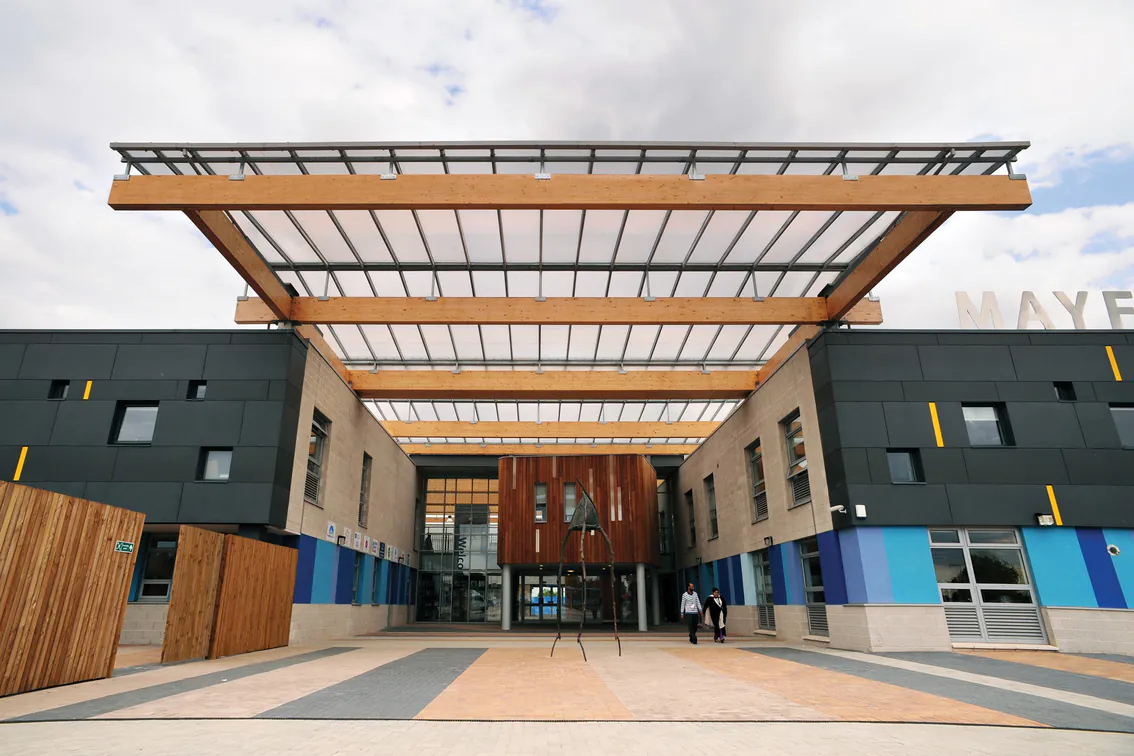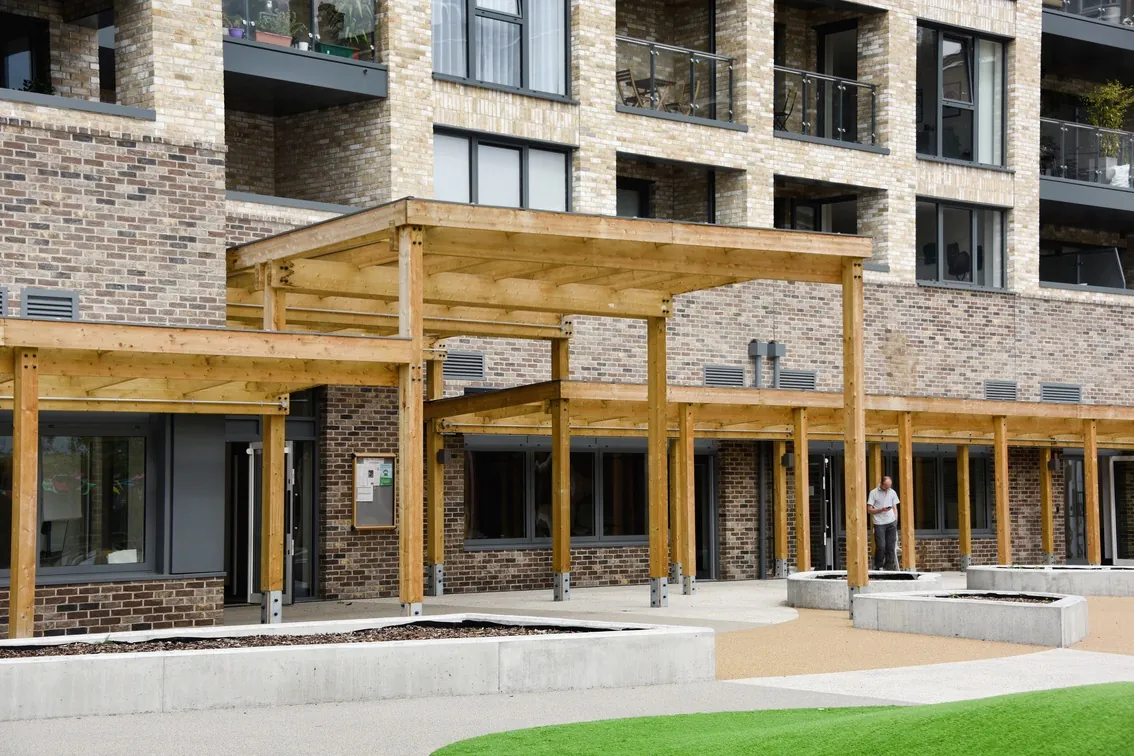Whether they’re used for covered walkways or cycle shelters, timber canopies bring warmth, natural beauty, and architectural appeal to outdoor environments. However, like all timber elements exposed to the elements, they can be susceptible to green algae growth over time.
This can detract from the appearance of the structure, make surfaces slippery and, if left unchecked, reduce the lifespan of the timber.
At Broxap, we design, manufacture and install durable timber canopies built to stand up to the UK’s challenging weather conditions. Here, we explain how to prevent green algae growth and maintain your canopy’s appearance and performance for years to come.
Understanding Green Algae Growth
Green algae are simple, plant-like organisms that thrive in damp, shaded environments. They’re often seen on north-facing surfaces or areas that remain moist for long periods, such as timber canopies in shaded courtyards or beneath dense tree cover.
Algae growth is typically a result of:
- Persistent moisture or humidity.
- Lack of sunlight or poor airflow.
- Accumulation of organic matter (like leaves or dirt).
- Surface roughness allowing algae spores to cling and spread.
While green algae are not harmful to the timber itself, they can trap moisture, which may contribute to discolouration or promote decay over time if the canopy isn’t properly treated or maintained.




Step 1: Choose the Right Timber and Treatment
Prevention starts before installation. Selecting high-quality, properly treated timber is the most effective way to minimise algae growth.
At Broxap, our timber canopies are constructed using sustainably sourced, pressure-treated softwoods or strong hardwoods. These timbers are not only dense and stable but are also treated to resist moisture ingress, which helps limit algae formation.
Tip: When specifying a timber canopy, ask about maintenance guides specific to exterior structures exposed to frequent wetting.
Step 2: Optimise Design and Drainage
Design plays a crucial role in preventing algae build-up. Poor drainage or flat surfaces can allow standing water to collect, creating the perfect environment for algae.
Effective canopy design should include:
- Adequate falls and roof pitches to shed rainwater quickly
- Integrated guttering and downpipes to direct runoff away from the structure
- Sufficient airflow around the canopy to aid drying
Our in-house design team takes all of these factors into account, ensuring every timber canopy is designed for both aesthetic appeal and long-term durability.




Step 3: Regular Cleaning and Maintenance
Even with quality materials and design, no timber canopy is completely maintenance-free. Routine cleaning helps prevent algae spores from establishing themselves.
Recommended maintenance routine:
- Inspect quarterly: Check for debris accumulation, leaf litter, or areas of persistent dampness.
- Clean biannually: Use a mild detergent or purpose-made wood cleaner, a soft brush, and low-pressure water to remove dirt and organic residue.
- Treat as needed: Depending on environmental exposure, apply protective coatings or stains every few years to maintain water repellence.
Avoid:
- High-pressure washing, which can damage the timber surface.
- Harsh chemicals or bleach, which may strip protective finishes.
Step 4: Consider Site Conditions
If a canopy is located in an area with heavy shade or poor drainage, small site adjustments can make a big difference.
- Trim nearby vegetation to improve light and airflow.
- Ensure surrounding ground levels allow for proper drainage.
- Divert irrigation systems or downpipes that may splash water onto the timber.
These simple tweaks can reduce the time surfaces stay damp, which is the key factor in preventing algae growth.




Step 5: Professional Aftercare
For long-term performance, consider a maintenance agreement or aftercare inspection from your canopy supplier. Broxap offers guidance on ongoing maintenance and can provide professional cleaning or re-treatment services to ensure your timber structure continues to perform at its best.
Keeping Your Timber Canopy Looking Its Best
Green algae is a natural occurrence in the outdoor environment, but with the right combination of material choice, smart design, and regular upkeep, it can be easily controlled.
A well-maintained timber canopy not only enhances the visual appeal of a space but also reinforces its sustainability and longevity.
For more information about our timber canopy range and our design-to-installation service, contact our team for tailored advice on specification and maintenance.
